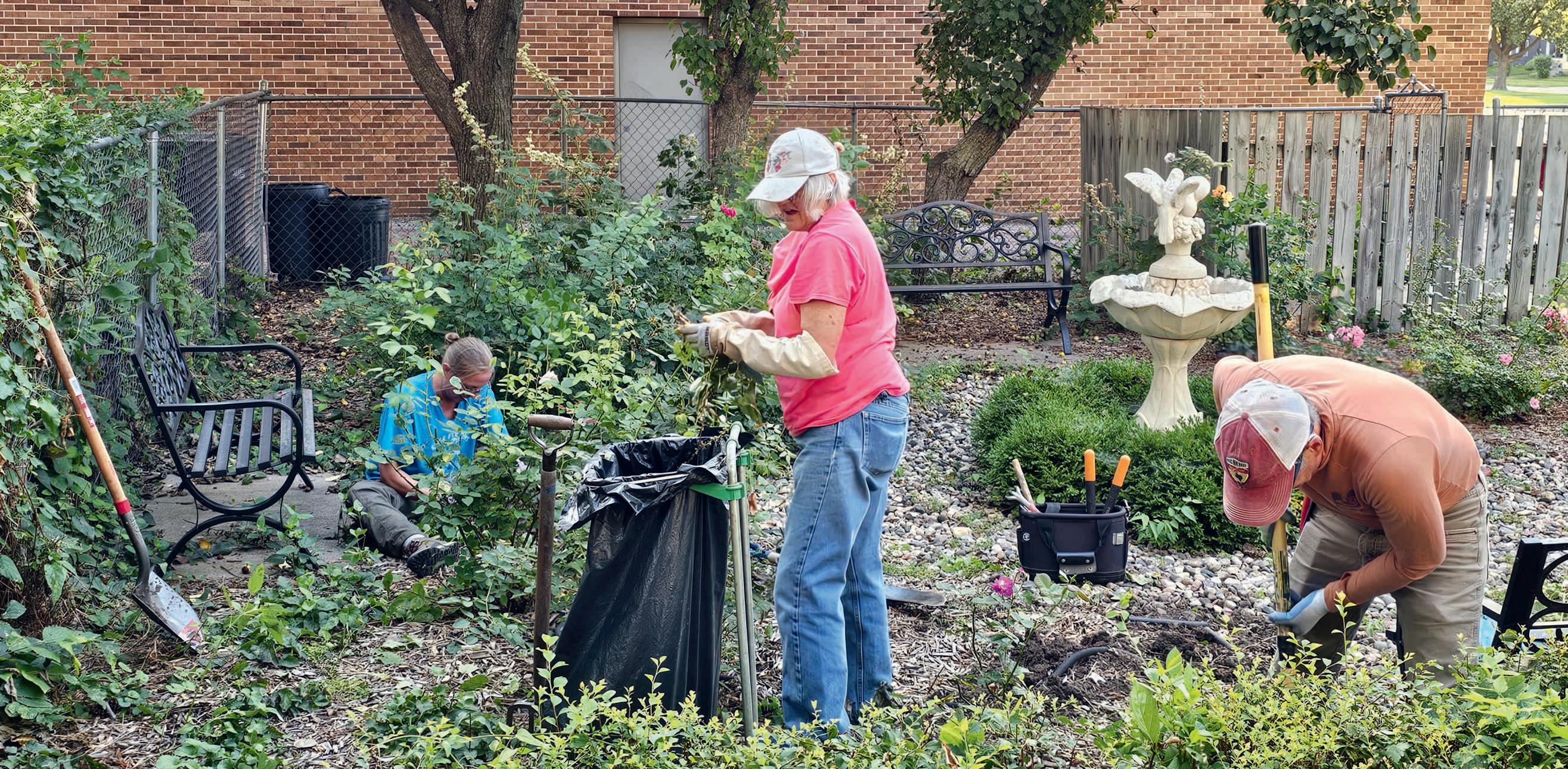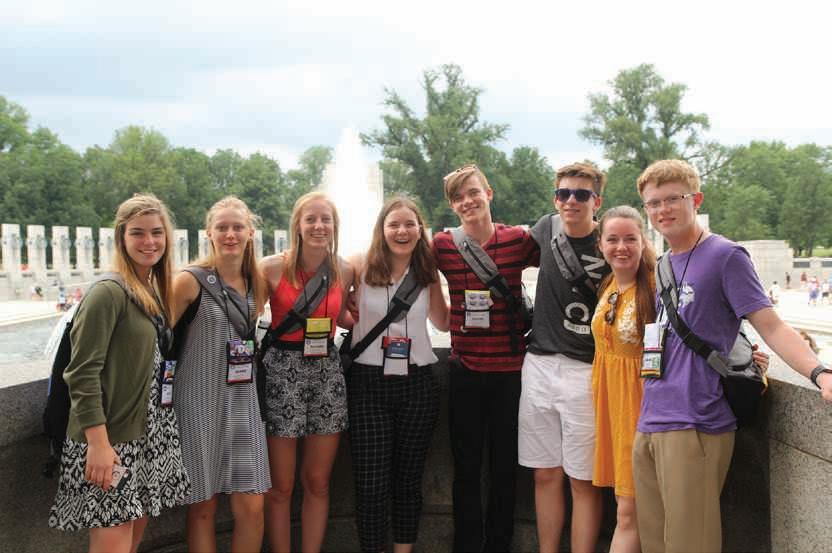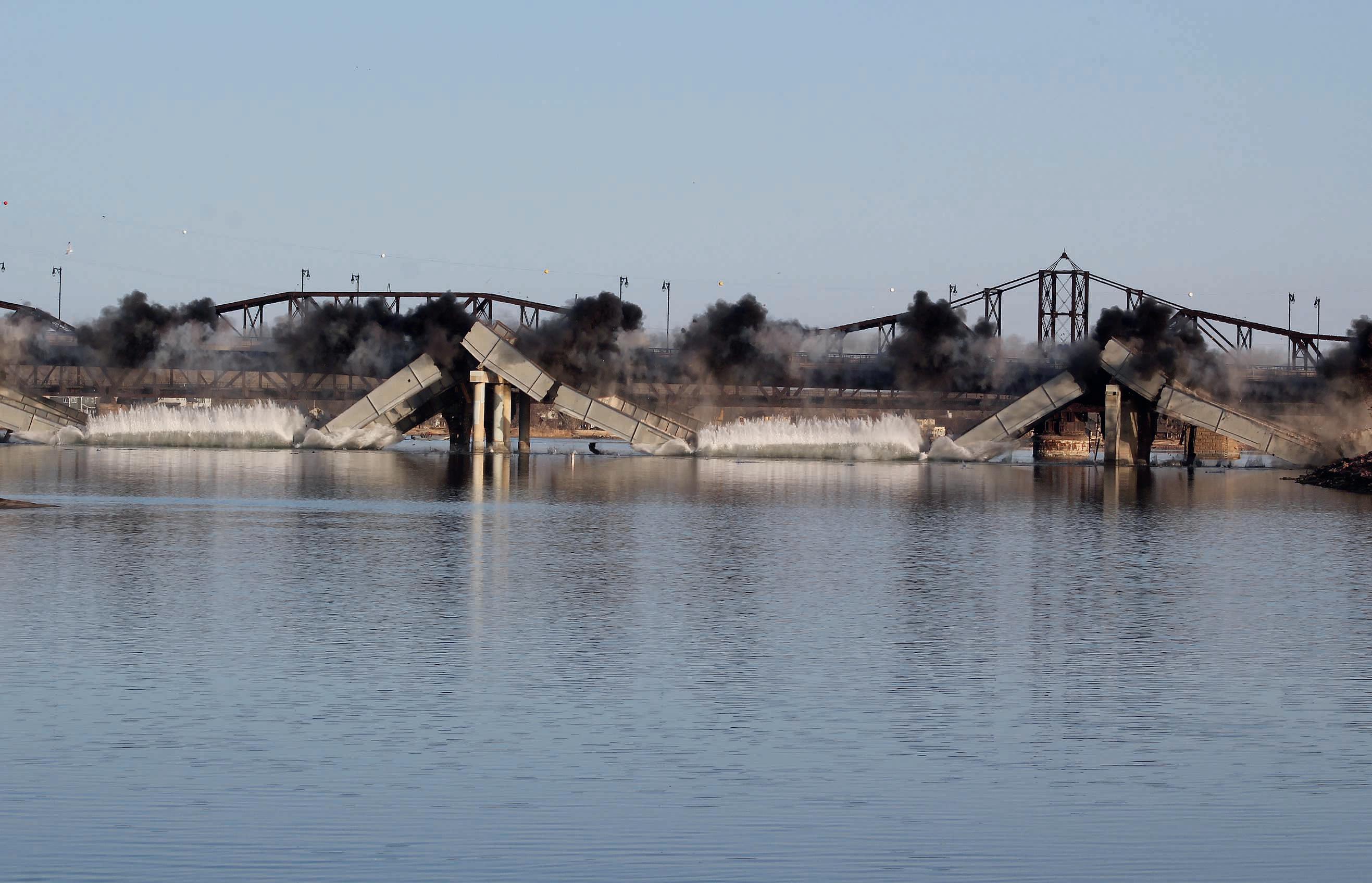





Robert Raker CEO/GM
Our board of directors is elected directly from the communities we serve. That local leadership keeps decisions close to home and focused on what matters most: providing safe, reliable, and affordable power to our members.
But local control isn’t just a feel-good phrase— it translates into real performance. West River Electric ranks among the top three cooperatives in South Dakota and the top 5% nationally in the ratio of members served per employee. That’s a powerful indicator of efficiency. We use various indicators to see how we stack up against similar Cooperatives. It’s important that we monitor these to avoid being an echo chamber. I am of the philosophy that if you can’t measure it, you can’t manage it. So, when asked, are we doing more with less—without compromising service or reliability? I can say yes, look at our stats. Our employee to member ratio is at the top of its class. Our reliability numbers are in the top 8% in the country, and our American Customer Satisfaction Index score is an 86. 8015500
So what does that mean for you?
It means we’re stretching every dollar further— but we’re not resting on our laurels. In today’s rapidly changing environment, efficiency isn’t just a strength—it’s a necessity. It’s what allows us to keep rates steady and continue investing in the
critical infrastructure our members rely on, even as material costs climb.
We operate a large, complex system. If we fail to continually reinvest in that system, we risk unintended consequences—declining reliability, costly repairs, and higher future costs. We’d simply be kicking the can down the road, putting the burden on future members.
Instead, we choose to invest today—just like the leaders before us did. That’s why our system is in such strong shape right now. And it’s why we’re currently developing our next Four-Year Work Plan, which will outline the upgrades and expansions needed to serve a growing membership well into the future.
We’re also proud to report that our annual audit was completed with no deficiencies—a clear sign of our financial health and the sound management behind it. 4523600
None of this would be possible without the dedication of our employees and the leadership of our board. Together, we’re not just keeping the lights on—we’re building a stronger future.
Happy Springtime and remember to call 811 and stay safe!
Robert Raker | CEO

(USPS No. 675-840)
Our Mission:
To serve our members’ best interest.
Our Vision: We will be a high performing co-op.
Our Values:
1. Safety 2. Accountability
3. Integrity 4. Innovation
5. Commitment to Community
This institution is an equal opportunity provider and employer.
Board President: Andy Moon
Board of Directors
Stan Anders – Vice President
Jamie Lewis – Secretary
Chuck Sloan – Treasurer
Larry Eisenbraun
Peter Blake
Marcia Arneson
Steven Edoff
Sue Peters
CEO and General Manager: Robert Raker –robert.raker@westriver.coop
Editor Amanda Haugen –amanda.haugen@westriver.coop
WEST RIVER ELECTRIC COOPERATIVE CONNECTIONS is the monthly publication for the members of West River Electric Association. Members subscribe to Cooperative Connections as part of their electric cooperative membership for $6 a year. West River Electric Cooperative Connections purpose is to provide reliable, helpful information to electric cooperative members on matters pertaining to rural electrification and better living. Nonmember subscriptions are available for $12 per year. Periodicals Postage paid at Wall, S.D., and at additional mailing offices. Postmaster: Send address changes to West River Electric Cooperative Connections, PO Box 412 , Wall, SD 57790-0412.
Other correspondence to: West River Electric Cooperative Connections, 3250 E Hwy 44, Rapid City, SD 57703; telephone (605)393-1500, Exts. 6564, 6531 or 6522; fax (605)393- 0275; e-mail amanda.haugen@westriver.coop.

Every May, Electrical Safety Month serves as a vital reminder of the importance of preventing electrical hazards at home. Electricity powers nearly every aspect of modern life, but if handled improperly, it can pose serious risks, including injuries and property damage.
Your electric cooperative understands the risks associated with improper electricity use, which is why we’re committed to reminding you to stay vigilant and practice electrical safety not only in May, but year-round.
By following key safety practices, you can reduce the risk of electrical hazards and ensure your family stays protected. Here are five essential tips for powering up safely at home.
1. Be vigilant. Regularly inspect your home’s electrical system for any signs of damage or outdated components and replace any frayed electrical wires or cords. The Electrical Safety Foundation International estimates roughly 3,300 home fires originate from extension cords every year, either from overloading, overheating or fraying. If you’re relying on extension cords as permanent power solutions, consider contacting a qualified electrician to install additional outlets where you need them.
2. Use Surge Protectors. Safeguard your sensitive electronics and appliances from surges with surge protectors. These handy devices help divert excess voltage away from your electronics, reducing the risk of damage or electrical fires. Not all power strips include surge protection, so read the product label carefully. Additionally, surge protectors can lose effectiveness over time and should be replaced when damaged or outdated.
3. Practice Safe Power Strip Use. Avoid overloading electrical outlets with power strips that exceed the outlet’s capacity. High-energy devices, like heaters, microwaves and hairdryers should be distributed across multiple outlets. Overloading an outlet with a “busy” power strip can lead to overheating and create a fire hazard, so be sure to check the power strip’s wattage rating before plugging in items.
4. Water and Electricity Don’t Mix. It may seem obvious, but accidents involving water contact with electrical items happen. Always keep electrical appliances and devices away from water sources, like sinks, bathtubs or swimming pools. Make sure your hands are dry before touching any electrical switches or appliances – never handle electrical devices with wet hands. Ground Fault Circuit Interrupters (GFCIs) should be installed in areas where water and electricity are typically in close proximity, including kitchens, bathrooms and outdoor outlets.
5. Educate Family Members. One of the best ways to ensure the safety of everyone in your household is to talk about electrical safety. Teach children not to play with electrical outlets or appliances and ensure they understand the potential dangers of electricity. Create and practice a home fire escape plan that includes electrical safety precautions in case of emergencies.
Practicing electrical safety at home is essential for protecting your family, property and peace of mind. Remember, electrical safety isn’t just a one-time effort – it’s a year-round responsibility. Taking these steps can help ensure a safer, more secure home for you and your loved ones.

“Don’t plant trees near power lines.”
Jeremiah cautions readers not to plant trees near power lines. Thank you for your picture, Jeremiah! Jeremiah’s parents are Mosiah and Cristine Barlow, members of West River Electric Association.
Kids, send your drawing with an electrical safety tip to your local electric cooperative (address found on Page 3). If your poster is published, you’ll receive a prize. All entries must include your name, age, mailing address and the names of your parents. Colored drawings are encouraged.
Ingredients:
8 oz. tube crescent rolls
4 boneless chicken breasts (cooked shredded and seasoned to taste)
Ingredients:
4 chicken breasts (boned and halved)
8 strips bacon
2 pkgs. chipped beef
8 oz. sour cream
1 can cream of chicken soup
6 oz. evaporated milk

Method
Wrap each half of chicken breast in a piece of bacon. Place in a baking dish lined with two layers of chipped beef.
Blend sour cream, soup, and milk. Pour over chicken.
Bake uncovered at 300°F for three hours. Serve over rice.
*Makes 8 servings.
Sharon Houchin Central
Electric Member
8 oz. cheddar cheese (finely shredded, divided) 10 1/2 oz. can cream of chicken soup
1 packet chicken gravy mix 1 cup water
Method
In a bowl, mix the shredded chicken and 1/3 of the cheese. Take a scoop of the mixture and roll it into a crescent roll then place in a greased 9” x 13” pan. Bake at 350°F until the crescent rolls look browned on top. Mix the soup, gravy mix, 1/3 of the cheese, and enough water to make the mixture pourable. Pour over the crescent rolls. Sprinkle the remaining 1/3 of the cheese on top and bake again until the cheese melts and starts to brown.
Nicole Einrem B-Y Electric Member
Ingredients:
1 tbsp. oil
1 lbs. boneless skinless chicken breast, cut into thin strips 1/4 cup Flavor Maker Taco Night Topping Seasoning 1/2 cup water
12 (6-inch) flour or corn tortillas, warmed
Method
Heat oil in large skillet on medium-high heat. Add chicken; cook and stir just until browned.
Stir in Flavor Maker Seasoning and water. Bring to boil. Reduce heat and simmer
5 minutes or until sauce has thickened and chicken is cooked through, stirring occasionally.
Spoon chicken into warm tortillas. Serve with desired toppings, such as shredded lettuce, shredded cheese, sour cream, guac or salsa.
McCormick.com
Please send your favorite recipes to your local electric cooperative (address found on Page 3). Each recipe printed will be entered into a drawing for a prize in December 2025. All entries must include your name, mailing address, phone number and cooperative name.

Amanda Haugen Communications Specialist
When a storm sweeps through South Dakota, toppling power poles and triggering outages, West River Electric members may find themselves asking, “why doesn’t WREA bury the lines underground to protect them from mother nature?”
The answer isn’t simple:
Electricity is delivered to a home, farm or business through a complex system that includes power generation, transmission and distribution. West River Electric is a distribution cooperative that owns and maintains a mix of overhead and underground power lines. They weigh the advantages and disadvantages unique to their system when deciding if lines should or shouldn’t be strung through the air from pole to pole or buried underground.
Currently, West River Electric has roughly 2,000 miles of overhead line and 600 miles of underground line. 11955500
The installation costs of underground lines are almost double that of an overhead line. “It costs approximately $170,000/ mile to put in underground versus the $90,000/mile to put in overhead,” says Mike Letcher, Manager of Operations. “It is more expensive and it’s hard for us to justify taking a line out that is perfectly good just to bury it. A line that has been there 30, 40, 50 years, that is still straight and working perfectly fine in terms of capacity and strength, it’s hard to justify burying it. Unless there is a real reason to, we’re going to continue to have more miles of overhead than underground,” Letcher says.
On top of the initial installation costs for both overhead and underground, there is routine yearly maintenance that takes place as well. Maintenance costs for overhead are roughly $960/mile per

year where underground is about $1,000/ mile per year, with cable locating being the largest expense in underground maintenance.
Seeing miles of power lines laying on the ground after a storm has passed through can be gut-wrenching. However, when an outage occurs, the focus is restoring power rather than deciding if we should replace the line. “We live in a state where frost, ice, wind, snow, and tornadoes reign. If we have an ice storm in April, we need to get the power back on. We don’t have the option to bury it right then and there. One, the ground is typically still frozen. Two, the process to install underground takes months,” Letcher says.
When responding to an outage, the goal is to get power restored as safely, quickly and efficiently as possible. Overhead restoration time will be quicker as nine times out of ten, the problem can be physically seen, and it is a less complex system. Underground restoration time is much longer as the problem can’t be seen with the naked eye and is a more complex system. It involves looking at our Outage Management System, SCADA, and finally, digging in the ground to fix the issue.
When it comes to determining overhead vs. underground line, reliability is kept at the front of the decision. While underground line won’t topple over during a storm, and clearing trees from the line isn’t a worry, underground line isn’t without faults and outages.
Once the line is in the ground, it’s in there for good, whereas an abandoned overhead line can be removed and reused. Detecting and repairing faults in underground line is more challenging compared to overhead. Like mentioned above, a visual inspection will find a fault. With underground, a fault is located by using a thumper, which puts voltage/current on the line as crews listen for a thump at the fault. Additionally, underground line is more susceptible to damage from the public, especially dig ins. That is why it is very important to call 811 and get locates before any digging project is started. 11529700
“Whether we’re beefing up our overhead line to be more resilient to nature or installing underground in a more feasible location, the best interest of our members is always the top priority,” Letcher mentions. “Our goal is to provide safe, affordable and reliable electricity to our members.”


















West River Electric awarded $9,500 in scholarships to 19 area students to assist in their post-secondary education.
Not pictured is Rebecca Wood.

Frank Turner frank.turner@sdrea.coop
After years of tending to her garden, Codington-Clark Electric member Dianne Rider of Hazel can confidently say she is an expert in horticulture. However, her extensive experience of working with the earth isn’t the only reason she is considered a soil savant.
In 2016, Rider earned the prodigious title of Master Gardener through the South Dakota State University Extension’s Master Gardener Volunteer Program. This program provides in-depth horticultural training – covering topics like plant science, soil management and sustainable gardening practices – so enthusiasts like Rider can share their extensive gardening knowledge with their communities.
Becoming an Extension Master Gardener volunteer is a commitment. Applicants must complete horticulture classes, pass the course test and contribute 40 hours of volunteer service
during the first year of involvement. Despite the challenges, Rider had aspired to this achievement for decades, but it wasn’t until she retired from her teaching career that she was able to dedicate herself fully and earn her place as a Master Gardener.
Reflecting the adage, “once a teacher, always a teacher,” Rider continues to educate and influence those around her, even after retirement, through gardening.
“Becoming a Master Gardener has always been on my bucket list since they organized,” Rider said. “I’ve always been a teacher, so finding a way to help others through gardening is probably what’s most rewarding.”
As a Master Gardener, Rider plays a key role in organizing annual gardening events for SDSU Extension, including the Master Gardener Annual Update Conference at Joy Ranch near Watertown. This event, attended by more than 125 Master Gardeners, serves as a thriving forum for gardening clubs to exchange ideas on the latest and greatest
projects they are tackling.
“The event is a lot of fun, because when you get 125 Master Gardeners in one room – let me tell you, the conversations are riveting,” Rider laughed.
Master gardeners also help SDSU Extension achieve its broader goal: to make cutting-edge research easily accessible to the people who can benefit from the findings. Master Gardeners have regular continuing education opportunities with experts from the SDSU Horticulture team, such as Professor John Ball, a SDSU Extension Forestry Specialist and South Dakota Department of Agriculture Forest Health Specialist. Once equipped with this information, volunteers can share the most significant takeaways from research being conducted across the state through the university, providing a bridge between research and practical application.
“Dr. John Ball’s presentation on how to trim a tree after planting it is one of the best things that I’ve learned that I can now share with others,” said Rider. “He says that raising a tree is just like raising a kid: you have to shape your tree when
they are young, otherwise they turn into ugly adults.”
Master Gardener Field Specialist Prairey Walkling emphasizes that the connection between research-based information and enthusiasts is what the Master Gardener Volunteer Program thrives on. And the research goes far beyond just trees. SDSU’s horticulture research also extends into innovative mulching techniques, soil care and even studies on the growth and quality of four popular zinnia varieties.
“SDSU Extension wants to empower individuals to reach their gardening goals through providing sciencebased information. Each person has different pieces of land, resources and goals for their gardens and landscapes,” she said. “We strive to provide them with trusted, research-based information to help them make decisions.”
Walkling said the impact of these volunteers cannot be understated. According to Walkling, there are more than 400 Master Gardeners across the state and 14 Master Gardener clubs. In 2024, these vital volunteers hosted 153 gardening events, including farmers market booths, gardening workshops and demonstrations, reaching nearly 10,000 South Dakotans. Regardless of the event or what is being discussed, Walkling said Master Gardeners carry an infectious love of digging in the dirt.
“These volunteers help get people excited about gardening,” she said. “There are so many volunteer opportunities –teaching youth, teaching adults, maintaining demonstration gardens, answering questions, organizing events, engaging in horticultural research, writing horticulture articles – the sky is the limit.”










A trip to Washington, D.C., for a unique leadership experience.
A visit to Basin Electric, where you’ll see the cooperative business model in action.
Scholarships to support your future academic goals.







Inspect and Maintain Your Electrical System
Every May, Electrical Safety Month serves as a vital reminder for homeowners to inspect their electrical systems, identify potential hazards, and implement safety measures to protect their homes and families. This awareness helps prevent electrical fires, shocks, and accidents in homes.
Electricity powers nearly every aspect of our daily lives— from lighting and appliances to heating and security systems. However, electrical malfunctions do happen and is among the leading causes of house fires in the U.S. 4064100
Fortunately, most electrical hazards can be prevented with routine maintenance, proper usage of electrical devices, and awareness of warning signs.
Many electrical issues develop over time due to wear and tear, improper use, or outdated systems. As a homeowner, be mindful of these common hazards:
8 Overloaded Circuits – Plugging too many devices into one outlet can overheat wiring and start a fire.
8 Damaged or Frayed Cords – Worn-out cords can expose live wires, increasing the risk of shocks and fires.
8 Old or Faulty Wiring – Homes built more than 30 years ago may have outdated wiring that can’t handle modern electrical demands.
8 Extension Cord Overuse – Using extension cords as permanent solutions instead of installing additional outlets is a fire hazard.
8 DIY Electrical Work – Attempting to fix wiring or install electrical components without proper knowledge can be dangerous.
Home Electrical Safety Tips
To keep your home safe, follow these electrical safety practices:
9 Schedule Regular Inspections – If your home is over 25 years old, have a licensed electrician inspect the wiring.
9 Check Outlets and Switches – Look for discoloration, sparks, or warm outlets, which may indicate faulty wiring.
9 Test Smoke Alarms and Carbon Monoxide Detectors – Ensure they are functioning properly and replace batteries as needed.
9 Unplug Unused Appliances – This prevents overheating and reduces energy waste.
9 Never Overload Power Strips – Plug only essential devices into surge protectors and avoid daisy-chaining power strips.
9 Keep Electrical Devices Dry – Never use hairdryers, radios, or other electrical appliances near water.
9 Install Outlet Covers – Plastic outlet caps or sliding outlet covers block access to the electrical sockets from little kids.
9 Know How to Shut Off Power – Every homeowner should know where the electrical panel is and how to turn off the main power supply in case of an emergency.
9 Have an Emergency Kit – Include flashlights, extra batteries, and a fire extinguisher rated for electrical fires.
9 Call a Professional for Repairs – If you notice flickering lights, buzzing outlets, or burning smells, contact a qualified electrician immediately. 2061700
Make
Electrical Safety Month is the perfect time to inspect your home’s electrical system and address any issues before they become dangerous. By practicing good electrical habits and making necessary upgrades, homeowners can reduce the risk of fires and accidents, ensuring a safe living environment for their families. Take action today—your safety is worth it!

Frank Turner frank.turner@sdrea.coop
Tons of concrete and steel came crashing down in a planned demolition of the Lt. Cmdr. John C. Waldron Memorial Bridge that connected Pierre and Fort Pierre over a half mile stretch of river. The planned explosion marked a significant historic moment for not only Pierre and Fort Pierre, but also eastern and western South Dakota.
The demolition of the bridge unfolded in seconds. A plume of black smoke erupted from the detonating cord placed at key points in the bridge, quickly followed by a bone-rattling shock wave. Paul Nelson, a recently retired employee of the South Dakota Department of Transportation, witnessed the end of the bridge’s 63-year lifespan. Nelson, a member of Oahe Elec-
tric, spent over 40 years with the SDDOT, serving most of that time as the regional bridge engineer. In this role, he was responsible for the maintenance, inspection and upkeep of the very bridge that he saw demolished.
As legacy bridge engineer, this was not Nelson’s first experience with such a demolition. “I had actually witnessed the 1986 demolition of the old truss bridge that was just downstream of the current railroad bridge – so I have been around something of this magnitude before,” he explained.
Even still, Nelson laughed that the modern demolition had a “pretty good report when it went off.”
Although the bridge has been decommissioned, its history endures. In 2002, the bridge was dedicated to Lt. Cmdr. John C.
Waldron, a naval aviator from Fort Pierre who led a torpedo squadron during the Battle of Midway in World War II. His actions proved pivotal in the battle, but led to death of himself and most of his squadron. Of the 30 men who served under his command, only one survived the Battle of Midway.
Waldron’s legacy is still commemorated through the new Pierre-Fort Pierre Bridge, which had its ribbon-cutting ceremony last month.
Construction of the new bridge began in 2020, just yards from the old bridge’s location. In total, the bridge cost nearly $50 million and is designed to last a century.
“This bridge is going to be a beautiful and wonderful enhancement to the communities and something that will last more than a hundred years,” South Dakota Governor Larry Rhoden said at the ribbon cutting ceremony for the new bridge that now connects the two halves of the state.


SHINING THE LIGHT ON WEST RIVER ELECTRICS DEDICATED EMPLOYEES

MIKE LETCHER

MANAGER OF OPERATIONS
HOW LONG HAVE YOU BEEN WORKING WITH WEST RIVER ELECTRIC?
WHAT DOES YOUR JOB ENTAIL?
WHAT DO YOU LOVE MOST ABOUT WEST RIVER ELECTRIC?
T
WHAT IS YOUR FAVORITE MEMORY SINCE STARTING WORK AT WEST
RIVER ELECTRIC? out in particular is our response as an organization to storm Atlas.
There are so many that come to mind, but one that sticks
HOW WOULD YOU DESCRIBE WEST RIVER ELECTRIC IN THREE WORDS?
S i m p l y t h e b e
WHAT MOTIVATES YOU TO GET UP AND GO TO WORK EVERY DAY? I

DAIGLE
MANAGER OF MARKETING AND COMMUNICATIONS
HOW LONG HAVE YOU BEEN WORKING WITH WEST RIVER ELECTRIC?
I
WHAT DOES YOUR JOB ENTAIL?
a c h , e v e n t s , a n d p u b l i c r e l a t i o n s . A b i g p a r t o f m y j o b i s
m a k i n g s u r e o u r m e m b e r s k n o w w h a t ’ s h a p p e n i n g a t t h e i r c o - o p w h e t h e r i t ’ s
n e w p r o g r a m s , s a f e t y t i p s , o r u p d a t e s d u r i n g o u t a g e s I a l s o c o l l a b o r a t e w i t h
o t h e r d e p a r t m e n t s t o p r o m o t e e n e r g y e f f i c i e n c y a n d m e m b e r s e r v i c e s . I t ’ s
a b o u t b u i l d i n g s t r o n g r e l a t i o n s h i p s w i t h o u r m e m b e r s a n d c o m m u n i t i e s .
WHAT DO YOU LOVE MOST ABOUT WEST RIVER ELECTRIC?
H o n e s t l y , i t ’ s t h e c a m a r a d e r i e . T h e r e ’ s j u s t s o m e t h i n g s p e c i a l a b o u t t h e w a y p e o p l e c o m e
t o g e t h e r h e r e . W h e t h e r i t ’ s t a c k l i n g a b i g p r o j e c t , h e l p i n g d u r i n g a s t o r m , o r j u s t d a y - t o - d a y w o r k , e v e r y o n e ’ s w i l l i n g t o s t e p u p a n d s u p p o r t e a c h o t h e r .
WHAT IS YOUR FAVORITE MEMORY SINCE STARTING WORK AT WEST RIVER
w a s a w i l d t i m e , b u t i t r e a l l y s h o w e d m e w h a t t h e c o - o p i s a l l a b o u t . E v e r y o n e n o m a t t e r t h e i r j o b j u m p e d i n t o h e l p w h e r e v e r t h e y c o u l d T h a t e x p e r i e n c e r e a l l y s t u c k w i t h m e i t s h o w e d j u s t h o w s t r o n g t h e t e a m i s a n d h o w c o m m i t t e d e v e r y o n e i s t o g e t t i n g t h e j o b d o n e , n o m a t t e r w h a t
HOW WOULD YOU DESCRIBE WEST RIVER ELECTRIC IN THREE WORDS?
R e l i a b l e . S u p p o r t i v e . C o m m u n i t y a n d F a m i l y - f o c u s e d .
WHAT MOTIVATES YOU TO GET UP AND GO TO WORK EVERY DAY?
M y f a m i l y , m y c o - w o r k e r s , a n d t h e m e m b e r s w e s e r v e . I w a n t t o s e t a g o o d e x a m p l e f o r m y k i d s , b e
s o m e o n e m y t e a m c a n c o u n t o n , a n d d o m y p a r t t o m a k e a d i f f e r e n c e f o r o u r m e m b e r s h i p . K n o w i n g t h e w o r k w e d o m a t t e r s t o t h e p e o p l e i n o u r c o m m u n i t i e s r e a l l y g i v e s m e p u r p o s e e v e r y d a y .

If you locate your account number anywhere in this issue of West River Electric’s Cooperative Connections, you will be a winner. There will be five account numbers placed randomly throughout the publication. If you spot your account number and notify our office before the 10th of the next month, you will receive a $10 credit on your next bill.
3250 E Hwy 44, Rapid City, SD
Monday-Friday 7 a.m. to 5 p.m.
605-393-1500
1200 W 4th Ave, Wall, SD
Monday-Friday 7 a.m. to 5 p.m.
605-279-2135
A night depository is available at both offices for your convenience.
Contact 605-279-2135 or 605-393-1500 during office hours. E-mail us at info@westriver.coop for questions on your account.
Contact 605-279-2135 or 605-393-1500 in the event of an outage or other emergency. Our calls are answered 24/7.
MAY 31, JUNE 28, JULY 26
Fort Sisseton Lantern Tour
Lake City, SD
605-910-4465

APRIL 26
Annual Spaghetti Feed & Silent Auction Supporting Black Hills Raptor Center 4:30 p.m.-7:30 p.m.
Cathedral of Our Lady of Perpetual Help
520 Cathedral Dr. Rapid City, SD info@blackhillsraptorcenter.org 605-391-2511
To have your event listed on this page, send complete information, including date, event, place and contact to your local electric cooperative. Include your name, address and daytime telephone number. Information must be submitted at least eight weeks prior to your event. Please call ahead to confirm date, time and location of event.
MAY 2-3
SD Spring Square Dance Festival
Fri. 7:30-10:30 p.m. Sat. 9:30 a.m.-7:30 p.m. Faith Lutheran Church Sioux Falls, SD 605-360-2524
MAY 3-4
Prairie Village Events Sat. Consignment Auction Sun. Season Opening Madison, SD www.prairievillage.org
MAY 3
Rummage & Bake Sale
8 a.m.-12 p.m. 5103 Longview Rd. Rapid City, SD
MAY 3
West River Pheasants Forever Banquet
5 p.m. Central Time Draper Auditorium Draper, SD 605-516-0143
MAY 3
American Legion Post 15 Just Because It’s Time to Dance 6-10:30 p.m. Tables Available El Riad Shrine Sioux Falls, SD 605-336-3470
MAY 6-7
7th Annual Energize! Exploring Innovative Rural Communities Conference Hosted by SDSU Extension Community Vitality Platte, SD 605-626-2870
MAY 17
Norwegian Independence Day Vivian, SD 605-222-3296
MAY 17
Annual Plant Sale
9 a.m.-11 a.m.
Codington Co. Extension Complex Watertown, SD 830-534-5359
MAY 23-25
Brandon’s Big Car Show
Carnival & Car Show Fri. 6-11 p.m. Sat. 1-11p.m., Car Show 1-4 p.m. Sun. 12-5 p.m. 815 McHardy Rd Brandon, SD
MAY 31
Auto Parts Swap Meet & Car Show
8 a.m.-2 p.m.
Brown County Fairgrounds Aberdeen, SD
MAY 31
Miss Prairie Village Pageant
6:30 p.m.
Lawrence Welk Opera House Madison, SD www.prairievillage.org
MAY 31
Hay Country Jamboree
7 p.m.
Gayville Music Hall Gayville, SD 605-760-5799
JUNE 5
Danish Constitution Day Celebration 6:15 p.m.-9 p.m.
Danish Folk Dancing & Music Daneville Heritage Museum Viborg, SD 605-766-1312 danevilleheritage.com
JUNE 11
Agricultural Women’s Day
9 a.m.-4 p.m.
Agar-Blunt-Onida School Onida, SD 605-769-0013
JUNE 13
Jesse James Days Garretson, SD visitgarretsonsd.com
Note: We publish contact information as provided. If no phone number is given, none will be listed. Please call ahead to verify the event is still being held.